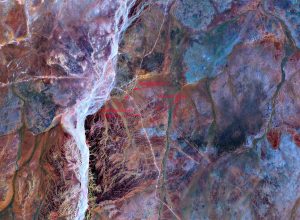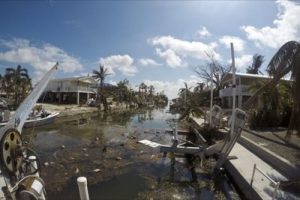June 20, 2018
Predictively Speaking: Should I Stay or Should I Go?
Posted by Annika Deurlington
Today’s post is written by David Trossman, Research Associate, University of Texas-Austin’s Institute for Computational Engineering and Sciences
Subtle environmental changes in the distant and not-so-distant past have contributed to civilization collapse, war, and uprooted lives. What, then, will be the human consequences of future changes on our planet? Looking to the past can provide lessons. Looking to the future through predictions can help us anticipate what risks may materialize in different regions. With the help of observational instruments like satellites, Earth system models, archaeological analyses, and economic models, Earth scientists are doing the crucial work that will determine our ability to prepare for and hopefully reduce the impacts of environmental changes on humans.
Archaeologists and Earth scientists have teamed up to figure out what contributed to the collapse of ancient civilizations. Droughts factored into the declines of the Harappans in the Indus Valley of modern-day Pakistan in 2200 BCE, the Mayans in modern-day Central America in 900 CE, the Khmers of Angkor in modern-day Cambodia in the 1400s CE, and others. Scientists know this because of chemical isotopes, which are proxies for environmental conditions, and laser-based (Lidar) observations from aircrafts, which have allowed us to examine the remnants of ancient peoples that were previously invisible. The details of how these civilizations collapsed and where the people of those civilizations went have been difficult to parse due to the relatively scant record-keeping long ago, but it is widely accepted that water scarcity played a pivotal role.
More recent examples of environmental changes can help us understand how people may have reacted to past environmental stressors. Drought-induced migration is a well-studied phenomenon that occurred during the Dust Bowl of the Great Plains of the USA in the 1930s, the drought of northern Ethiopia and the Sahel in the 1970s and 1980s, and the drought of Syria in the 2000s and 2010s. In some instances, pathways were from rural areas to urban areas after it was no longer possible to sustain oneself with existing agricultural practices, but other exoduses were out of home countries. The mingling of new communities compounded with the economic instability that results from drought vulnerability can heighten socio-political dissatisfaction. Some have argued that the drought in Syria played a role in the eventual uprising and subsequent civil war there. Unfortunately, the Earth knows only geophysical boundaries, not geopolitical ones.
Migrations are not always mass movements of people, though. Sometimes they come in the form of a steady drip that requires an analysis to recognize. Census and meteorological data from the past several decades have revealed that the more extreme the drought that a given Mexican state experienced, the greater the percent of people that migrated from that Mexican state to the USA. This can be better understood through the concomitant crop yields. Similarly, European Union asylum applications have spiked from countries experiencing extreme temperature fluctuations. These studies suggest that temperature extremes have made people seek shelter in other countries, while precipitation extremes have made people get up and move.
Sea level change and associated intrusion of salt water into drinking water are also migration-inducing environmental forces. Predictions for how people will migrate suggest that Florida will have the sharpest decline in population because it is the flattest, lowest-lying state. For those who don’t have the ability to move, it’s likely that the most frequently inundated areas will become low-income areas, emerging as a chief civil justice and humanitarian issue. It’s projected that Texas will gain the most people. However, observations have shown that Texas has depleted more water resources since 2002 than almost any other state. And what about the people on islands that will be inundated beyond habitability? Taking a cue from Hollywood, floating islands are being built, but many islands that can withstand rogue waves and extreme weather are needed to house the millions of people that will be displaced.
Earth scientists are needed for challenges like these. Projections of changes in environmental conditions are not only important because they could help with predicting how many migrating people to expect, but also because they could potentially help some would-be-migrants prepare for alternative futures at home. With the trove of big data that Earth scientists and others are helping to generate, understand through models, and make predictions from, will people be able to stave off the societal instability that has led to migrations in the past? Or will we trust in belief over data? The time for taking action is now so that the world is prepared when large populations of people are faced with the heart-wrenching decision: should I stay, or should I go?



